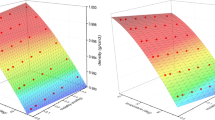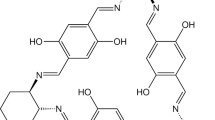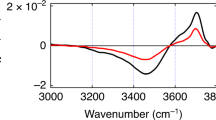Abstract
THE deuterium content of naturally occurring water has so far been determined by two methods—from the mass-spectrogram of the hydrogen derived from it; and from the specific gravity of deuterium-free water. The former method1 gave for the abundance ratio H/D the value 5000 ±500, while two discrepant values2,3 have been obtained by the latter, namely 9000 and 5750±250.
This is a preview of subscription content, access via your institution
Access options
Subscribe to this journal
Receive 51 print issues and online access
$199.00 per year
only $3.90 per issue
Buy this article
- Purchase on SpringerLink
- Instant access to full article PDF
Prices may be subject to local taxes which are calculated during checkout
Similar content being viewed by others
References
Bleakney and Gould, Phys. Rev., 44, 265; 1933.
Ingold, Ingold, Whitaker and Whytlaw-Gray, NATURE, 134, 661; 1934.
Johnston, J. Amer. Chem Soc., 57, 484; 1935.
Author information
Authors and Affiliations
Rights and permissions
About this article
Cite this article
EDWARDS, A., BELL, R. & WOLFENDEN, J. Deuterium Content of Naturally Occurring Water. Nature 135, 793 (1935). https://doi.org/10.1038/135793c0
Issue date:
DOI: https://doi.org/10.1038/135793c0



